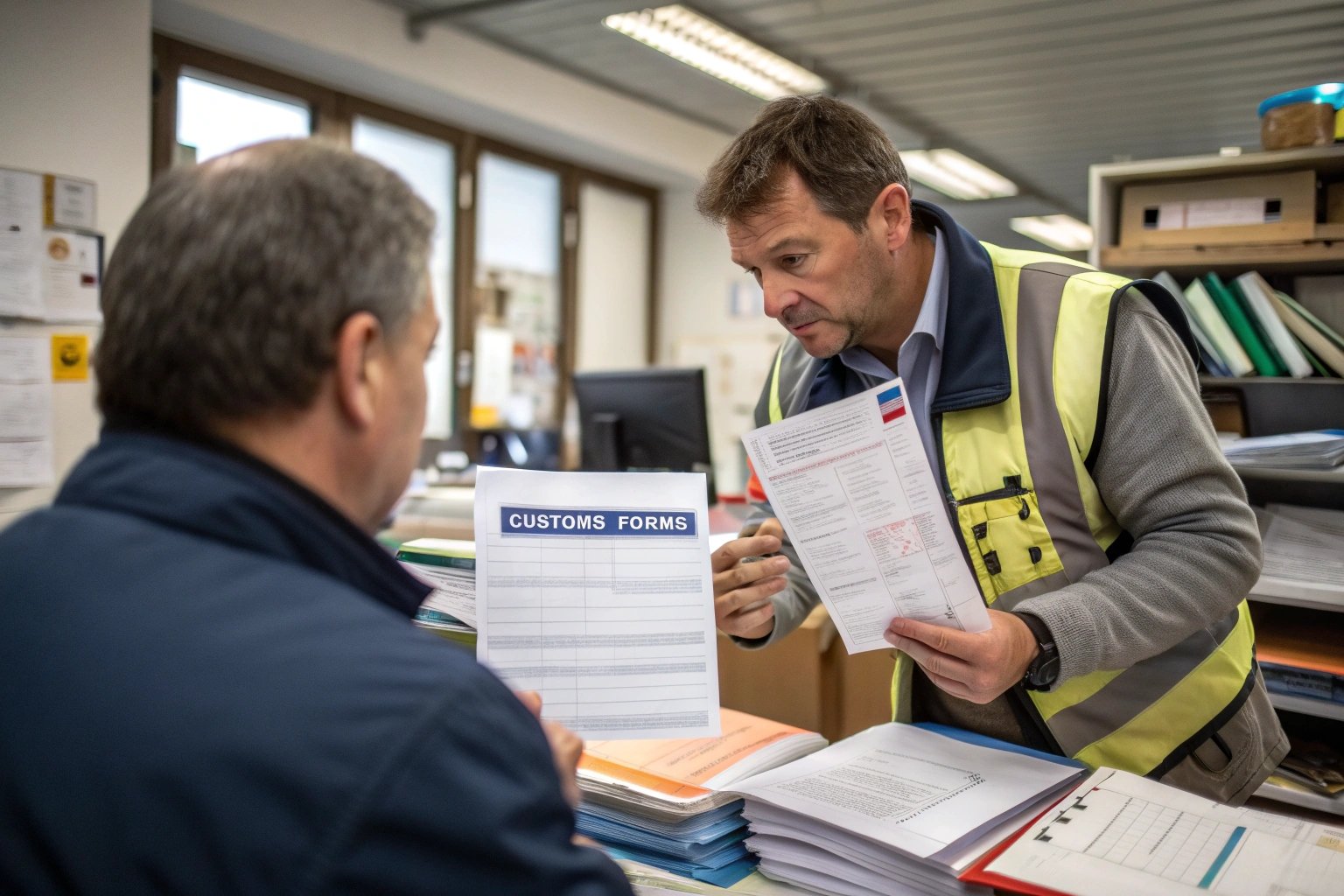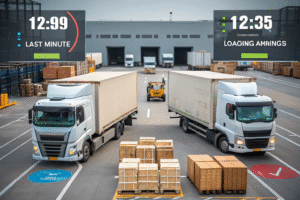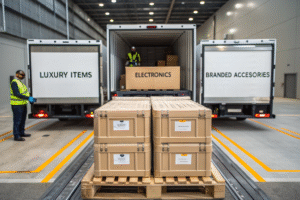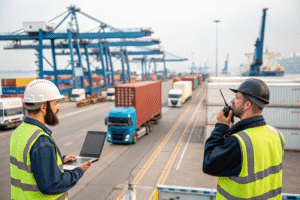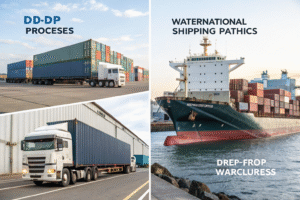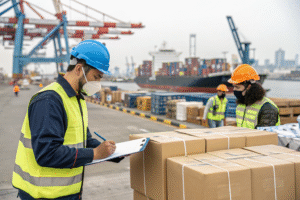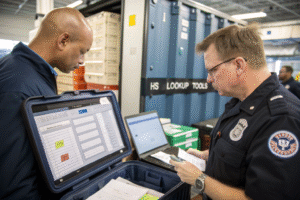International shipping can look easy from the outside. But one overlooked detail — a wrong document, an incorrect code, or a poorly packed box — can delay, damage, or derail your entire shipment.
The most common mistakes in global freight include documentation errors, incorrect Incoterms, miscalculated duties, and poor packaging. Each can cost time, money, or both.
If you want to ship smart and avoid unnecessary losses, knowing what not to do is just as important as knowing what to do.
Incomplete or inaccurate shipping documentation
Documentation is the foundation of customs clearance. If it’s missing, wrong, or inconsistent, your goods won’t move — or worse, they’ll get held or fined.
Incomplete or inaccurate documents are the #1 reason for customs delays, rejections, or penalties. This includes commercial invoices, HS codes, and packing lists.

What errors happen most often?
| Document | Common Error | Risk |
|---|---|---|
| Commercial Invoice | Undervalued cargo | Duties, seizure, fines |
| Packing List | Mismatched weight or quantity | Delays at inspection |
| HS Code Sheet | Incorrect classification | Overpayment or customs hold |
| Certificate of Origin | Missing or unverifiable | Loss of tariff exemptions |
| Bill of Lading | Wrong consignee name or address | Delivery failure |
We’ve helped clients fix invoices where the declared value was 30% under real cost — which could have triggered customs audits. By correcting it early, we avoided a 7-day hold at U.S. customs.
How to avoid these errors?
- Use freight forwarder-provided templates
- Double-check product descriptions and declared values
- Always include contact details and Incoterms
- Let your forwarder review before submission
At GeeseCargo, we check every invoice and packing list before departure — because we know prevention is faster than correction.
Choosing the wrong Incoterms or freight method
Shipping terms define who pays, who’s responsible, and where the risk transfers. Get them wrong, and you could end up paying fees you didn’t expect — or facing customs without support.
Many shippers choose unsuitable Incoterms (like EXW or CIF) or freight methods that don’t match their timelines, volumes, or destination needs.

What goes wrong?
| Mistake | Consequence |
|---|---|
| Choosing EXW without a broker | Buyer must handle export clearance in China |
| Using CIF instead of DDP | Buyer pays surprise customs charges |
| Booking air when LCL was enough | Overspends by 5–10x on freight |
| Booking sea when timing is critical | Missed retail launches or customer deadlines |
One client used EXW for a shipment from a remote town — unaware they’d need to hire their own Chinese export agent. It delayed the cargo by 4 days and added $600 in handling fees. We later switched them to FOB for smooth pickup and export.
How to choose the right terms?
- If you're new, choose DDP for full-service simplicity
- If you have customs experience, FOB offers control
- Match air vs. sea vs. rail based on urgency and cargo size
We guide every GeeseCargo client to select the best Incoterm and mode — not just the default their supplier offers.
Underestimating customs duties and import taxes
Even if your freight rate looks great, you might be shocked by the final landed cost — if you forgot to factor in duties, tariffs, and taxes.
One of the biggest financial mistakes in global trade is underestimating customs duties — either due to incorrect HS codes, wrong valuation, or ignoring destination rules.

Where do shippers go wrong?
| Area | Common Oversight |
|---|---|
| HS Code | Applied without verification — wrong duty % |
| Declared Value | Understated to save money — triggers audits |
| Country of Origin | Declared incorrectly — loses trade preferences |
| Local Rules | Ignoring rules like anti-dumping taxes or VAT registration |
We’ve seen importers quote 5% duty, only to find out they owe 17% due to classification errors — or worse, that they owe retrospective duties months after entry.
How to avoid duty mistakes?
- Work with a forwarder to assign the correct HS code
- Use legitimate commercial values
- Ask if your product qualifies for FTA, GSP, or MFN programs
- Get a landed cost estimate before booking
At GeeseCargo, we offer customs pre-checks and optional DDP service — so our clients get exact landed costs upfront, not surprise invoices later.
Poor packaging that leads to cargo damage
You might do everything else right — but if your packaging fails, you’ll still lose. Fragile, overstuffed, or under-wrapped cartons get crushed, soaked, or broken in transit.
Improper packaging causes damage during handling, loading, shipping, or customs inspection — and forwarders or carriers aren’t liable unless negligence is proven.

What packaging mistakes are most common?
| Problem | Result |
|---|---|
| No pallets | Cartons shift or collapse during loading |
| Weak carton material | Boxes tear, especially in LCL stacks |
| No waterproof layer | Cartons soak during rainy port handling |
| No internal padding | Goods break from vibration or shock |
| No labels or shipping marks | Cargo gets misplaced or delayed at terminal |
We once received a container of fragile kitchenware packed in single-layer boxes — no pallets, no bubble wrap. 38% of the contents were damaged on arrival. That client now uses GeeseCargo-approved export packaging SOPs.
How to package properly?
- Use 5-layer corrugated cartons
- Wrap internally with foam or bubble wrap
- Stretch-wrap pallets and label clearly
- Add “Do Not Stack” and “Fragile” marks where needed
- Ensure shipping marks match the packing list
We inspect packaging photos for every shipment before pick-up — especially for fragile, high-value, or FCL cargo.
Conclusion
Mistakes in international shipping are common — but preventable. With the right forwarder, accurate documents, smart Incoterms, realistic tax planning, and strong packaging, you avoid the costly errors that delay deliveries or damage your bottom line. At GeeseCargo, we help you ship smarter — every step of the way.
